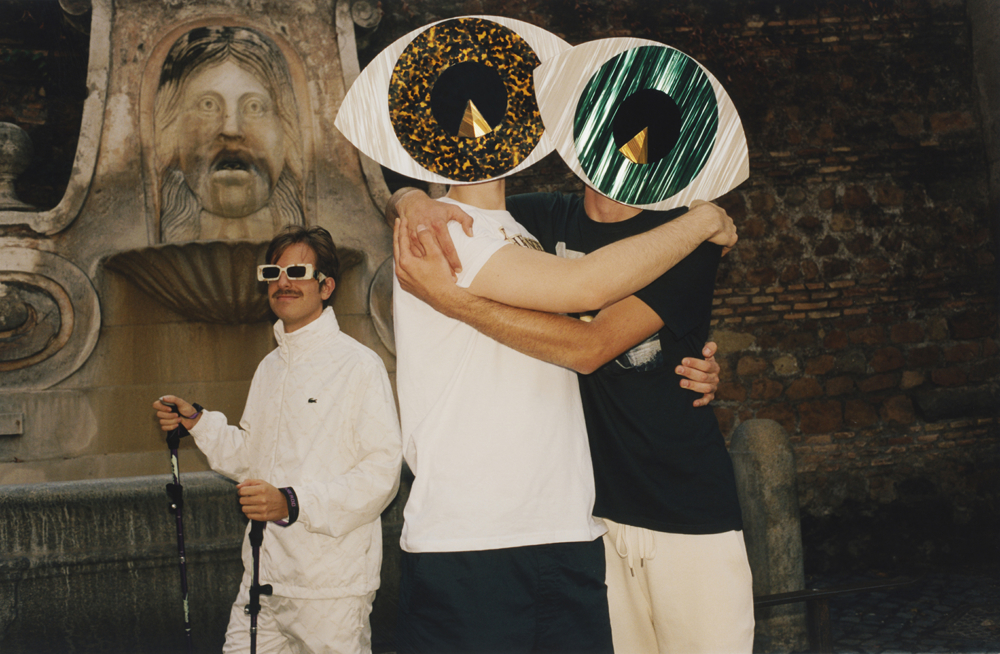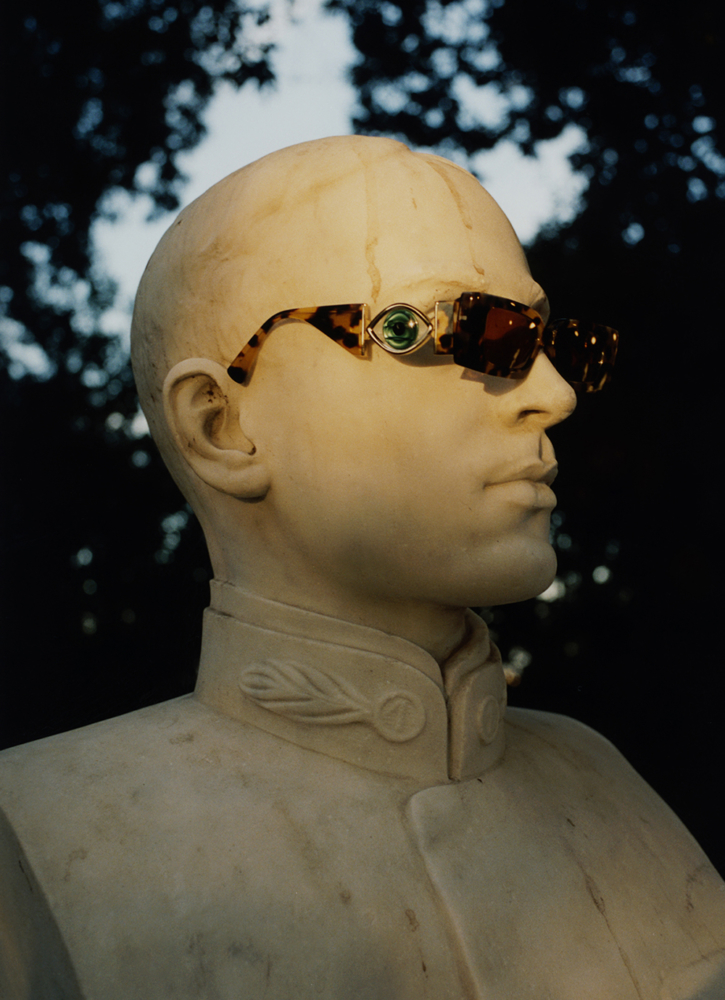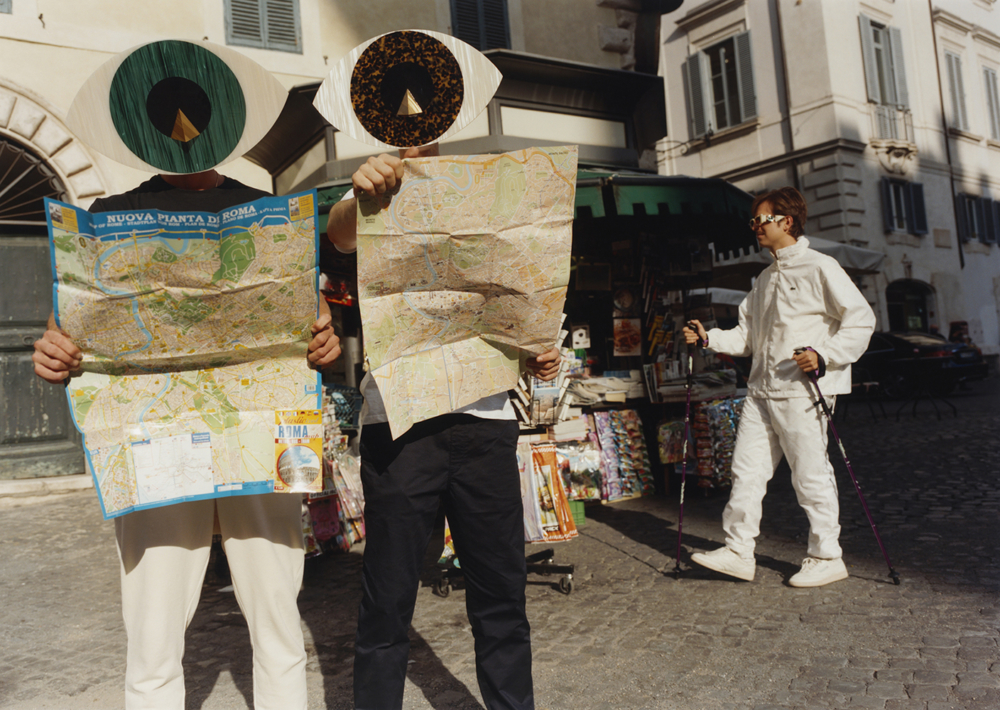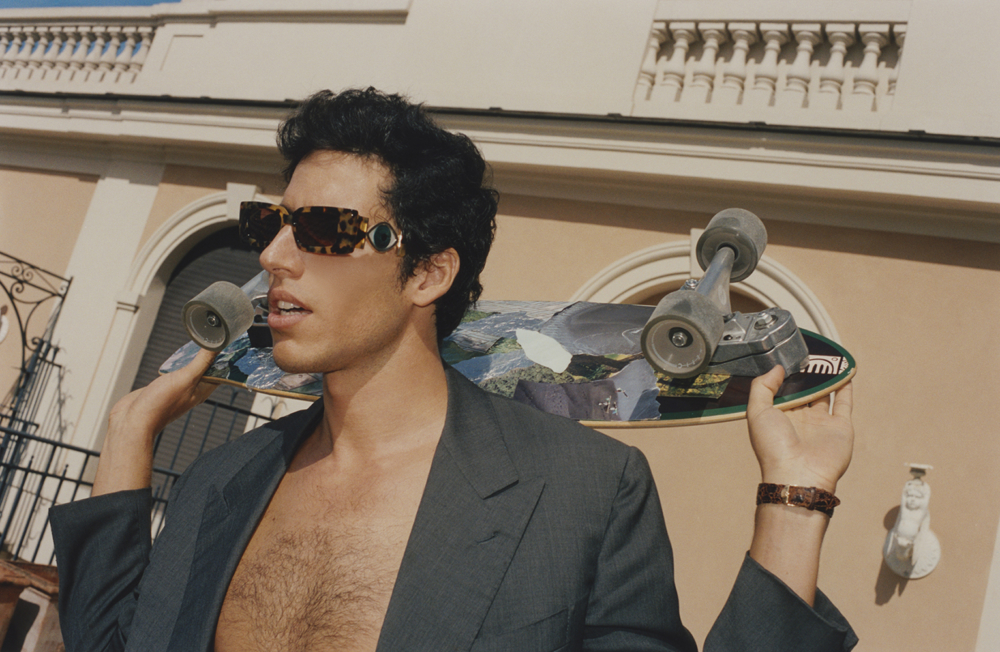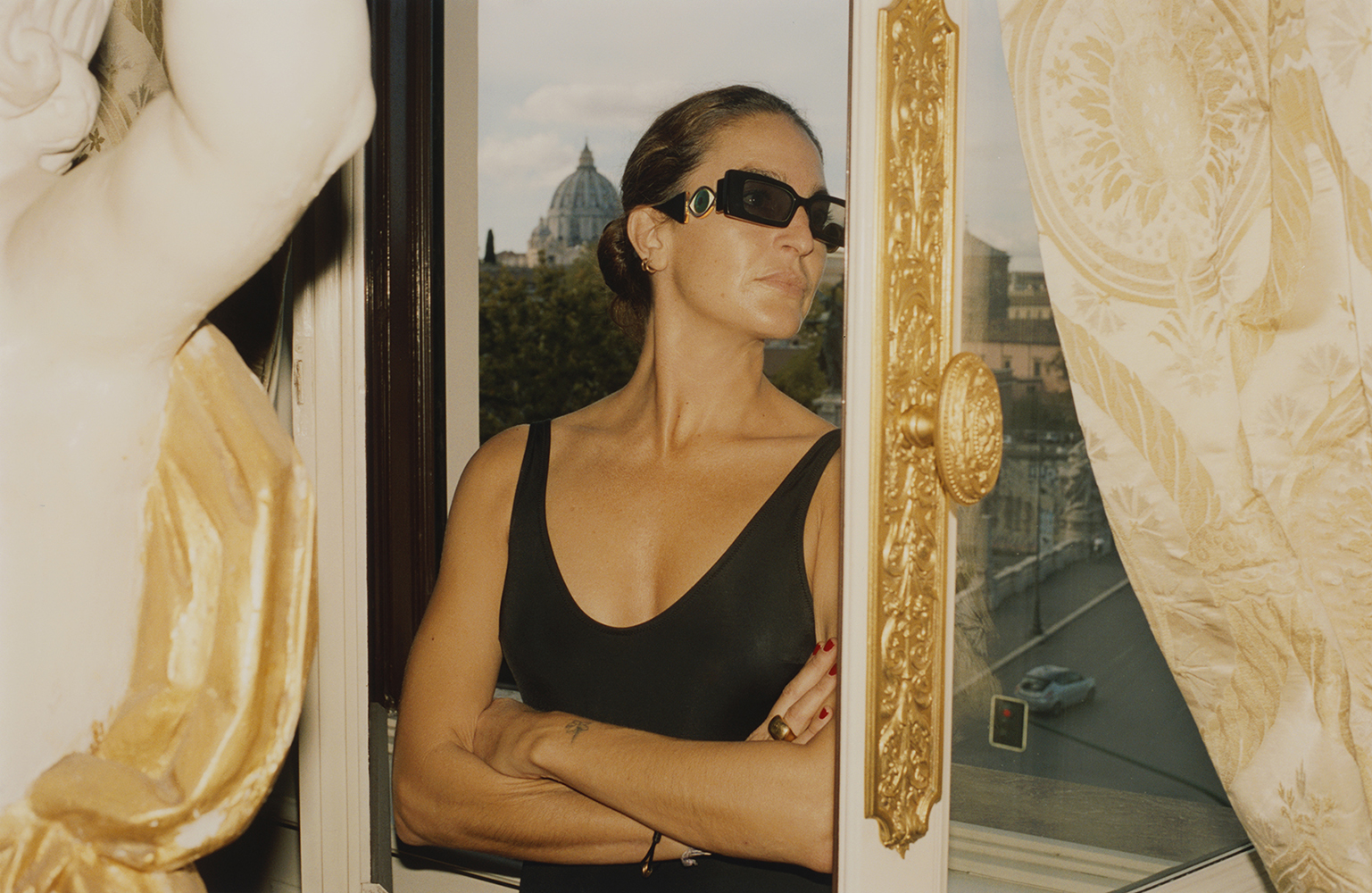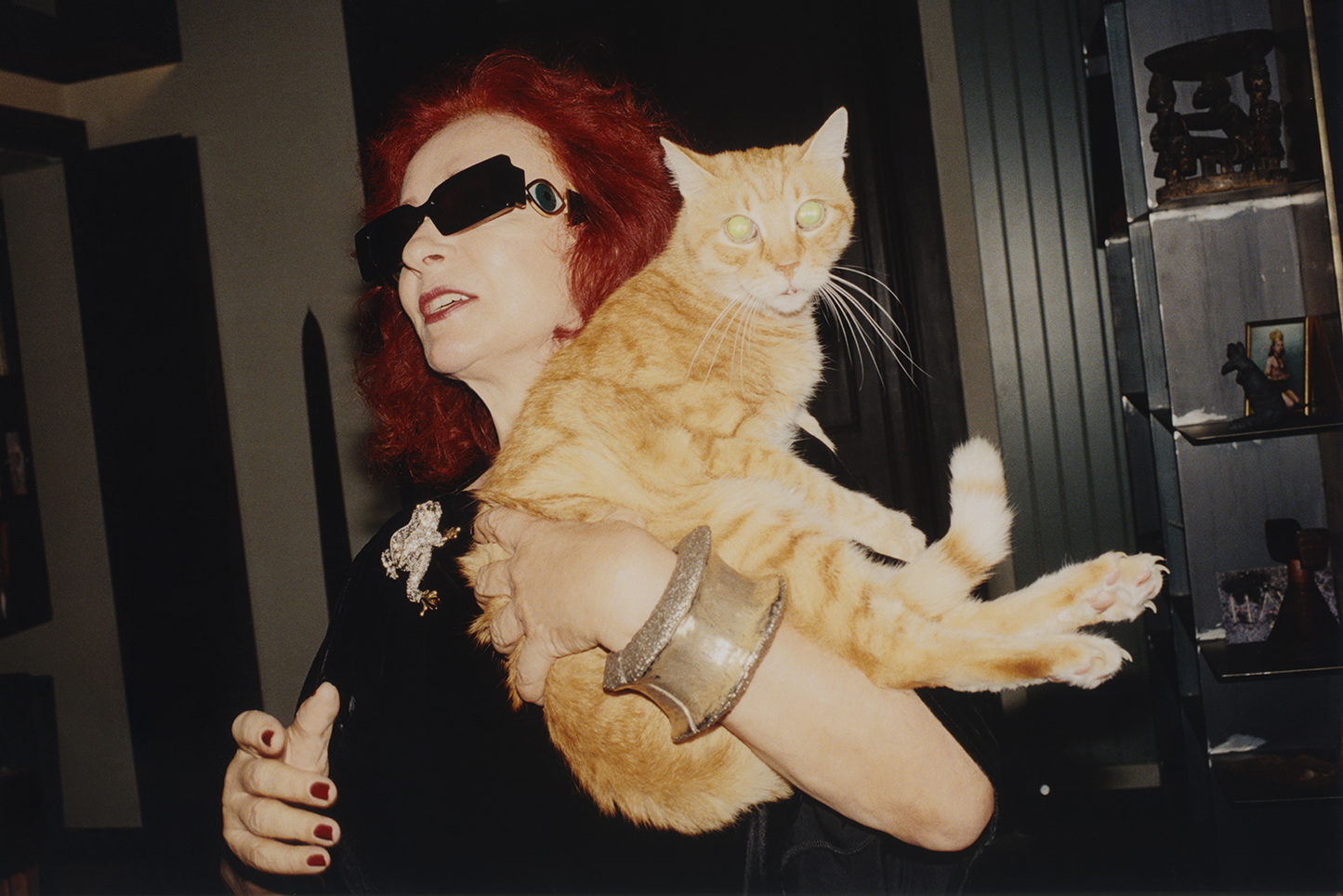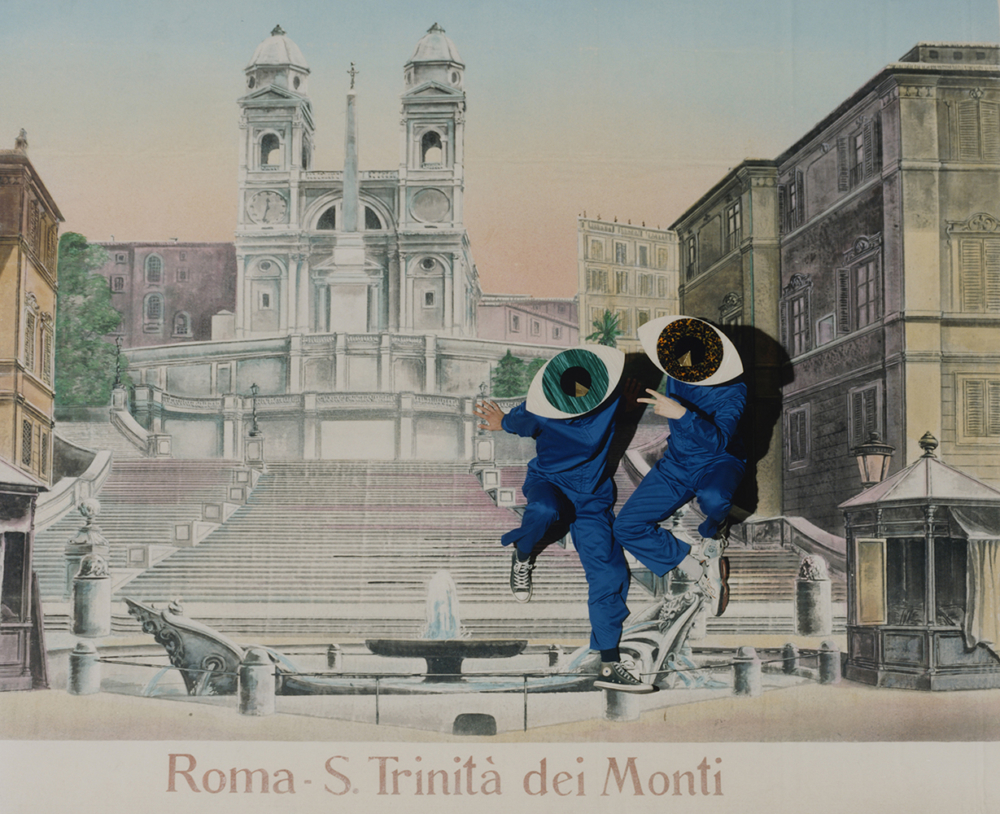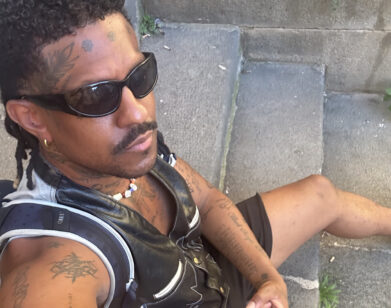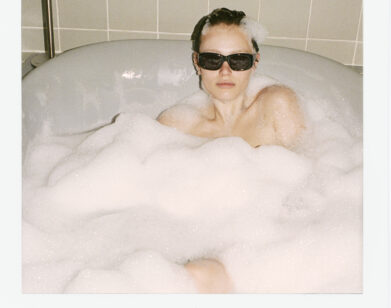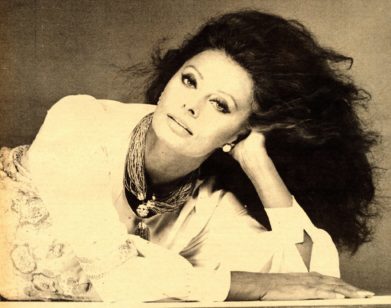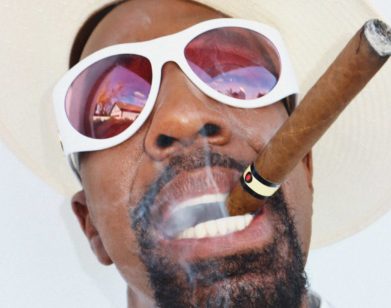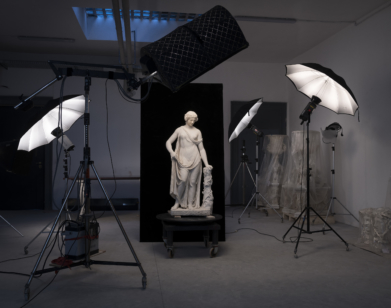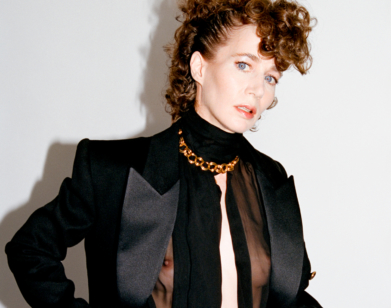q&a
Spanish Artist Ignasi Monreal Wants to Expand Your Vision
Out with the old, in with the new, or so they say. But Ignasi Monreal, the Spanish, Rome-based artist, has never been one to discard the existing beauty of the world. His creations, which combine oil paintings with digital art, are pop culture pieces that remix old and new and add a cherry on top. From Dua Lipa to Gucci, Rosalia to Bvlgari, Monreal has created art for the hottest stars and brands in the world. Now, with a collaboration with Etnia Barcelona, the eccentric Spanish eyewear brand, Monreal has created a pair of sunglasses that could be comfortable on display at an art museum. The limited-edition shades come in three colorways and feature eyes on the temples as a way to “expand your vision”—something we could all use as 2020 comes to a close. Much like his works of art, the sunglasses take inspiration from Monreal’s years living and exploring Rome, his hometown Barcelona, and the colorful individuals that comprise his artistic bubble. Recently, the artist connected with Interview from his cold studio in Rome for a conversation about peripheral vision, John Berger’s Ways of Seeing, and seeing beauty wherever you go.
———.
ERNESTO MACIAS: Your collaboration with Etnia is so groovy, funky, and really assaults the senses. What attracted you to work with them?
IGNASI MONREAL: They gave me creative freedom, which is always very attractive. They’re from Barcelona and so am I, so I was very excited to be able to work with such a cool brand from my hometown. The project ended up being very personal.
MACIAS: What really caught my eye the most were the eyes on the side of the sunglasses, on the temples. I know there’s a couple of inspirations behind them—break it down for us.
MONREAL: It was a bit of peripheral vision. I was finding inspiration in the most obvious thing, which is Ways of Seeing by John Berger. It was a great inspiration because it made a big impact on me a few years ago. I keep going back to it, the idea of looking at the perceived reality from a new perspective, finding meanings in what we know or think we know. So these glasses are a filter that helps you see the world in a new way, at least for me. The peripheral vision was to expand your sight.
When I moved to Rome, I saw that the city’s a museum in itself. The reason why I came here really, as corny as it sounds, is because I was looking for beauty and inspiration. I was living in London before and London is not very beautiful, especially in East London where I lived. I wanted the opposite. I came here and these sunglasses are a bit of the culmination of these three years. It also comes at a perfect time because I’m moving to Lisbon next year. It’s a bit of a goodbye love letter to my experience.
MACIAS: When you moved to Rome, what were some of the things that really caught your eye—what places particularly?
MONREAL: There are so many, but there’s one right next to my house, two minutes walking from here, which is called Villa Farnesina, this small villa that not many tourists know about, and it’s all painted by Raphael. He opened it in trompe-l’oeil, it’s a French word that means trick the eye. It’s all fake marvels of painted fake perspective, fake everything. That has been abig inspiration in my work ever since I arrived here, tricking the eye into believing something else. It gives functionality to the painting, an extra layer of meaning.
MACIAS: The video that you creative directed was shot in Rome as well. What did you want to convey with that video?
MONREAL: Well, it was more like a fun take on tourists. You can see a few cameos of me in the background sort of dressed like a tourist, in a tracksuit. That’s how tourists come to Rome, with the tracking sticks. I thought it was very funny, but it’s more about the eyes—as tourist eyes or foreigner’s eyes. I came here as a Spanish person coming from the outside, just traveling around the city and discovering it as I have in these few years. The city is not only about monuments and sculptures, and paintings, it’s also about the people. For the campaign, we put together a team of my closest people in the city and we did portraits of them because they’ll tell you as much about this city as any church or any painting.
MACIAS: So the people in the campaign are actually friends of yours in Rome?
MONREAL: We used real people. They’re actually here right now, just arriving, some of them. I live in an art gallery and the owner is in the campaign. There’s also my boyfriend’s friend, he’s this sort of Italian sexy Casanova guy who is with all the ladies, and I thought “You’re such a character, come in.” The producer of the shoot made it into the campaign as well in the end, because we went out one night during the shoot and we got drunk and told her, “You should be in the pictures!” The next day she showed up with a bathing suit and we shot her and she looks amazing. Walking down the street, we found two kids coming back from school, and we shot them too. So it has this sort of spontaneous energy with real people, and I thought that was the cool part of shooting this diary.
The city is full of characters. That’s the beauty of it. It’s very cinematic, but it’s not only about the beautiful things. The scenes that you find day-to-day, they seem to be coming out of a movie. You find these unbelievable situations in the most common things.
MACIAS: Sunglasses are an important accessory, at least for me. They mean a lot more than what they’re intended for. What do you hope people get out of wearing these really insane-looking sunglasses?
MONREAL: One, they look good on almost anybody—they really suit everybody. And two, just this reminder of not taking things for granted and trying to find a new perspective in looking at things. Try to find creativity in the darkest places. Hopefully, they will.

